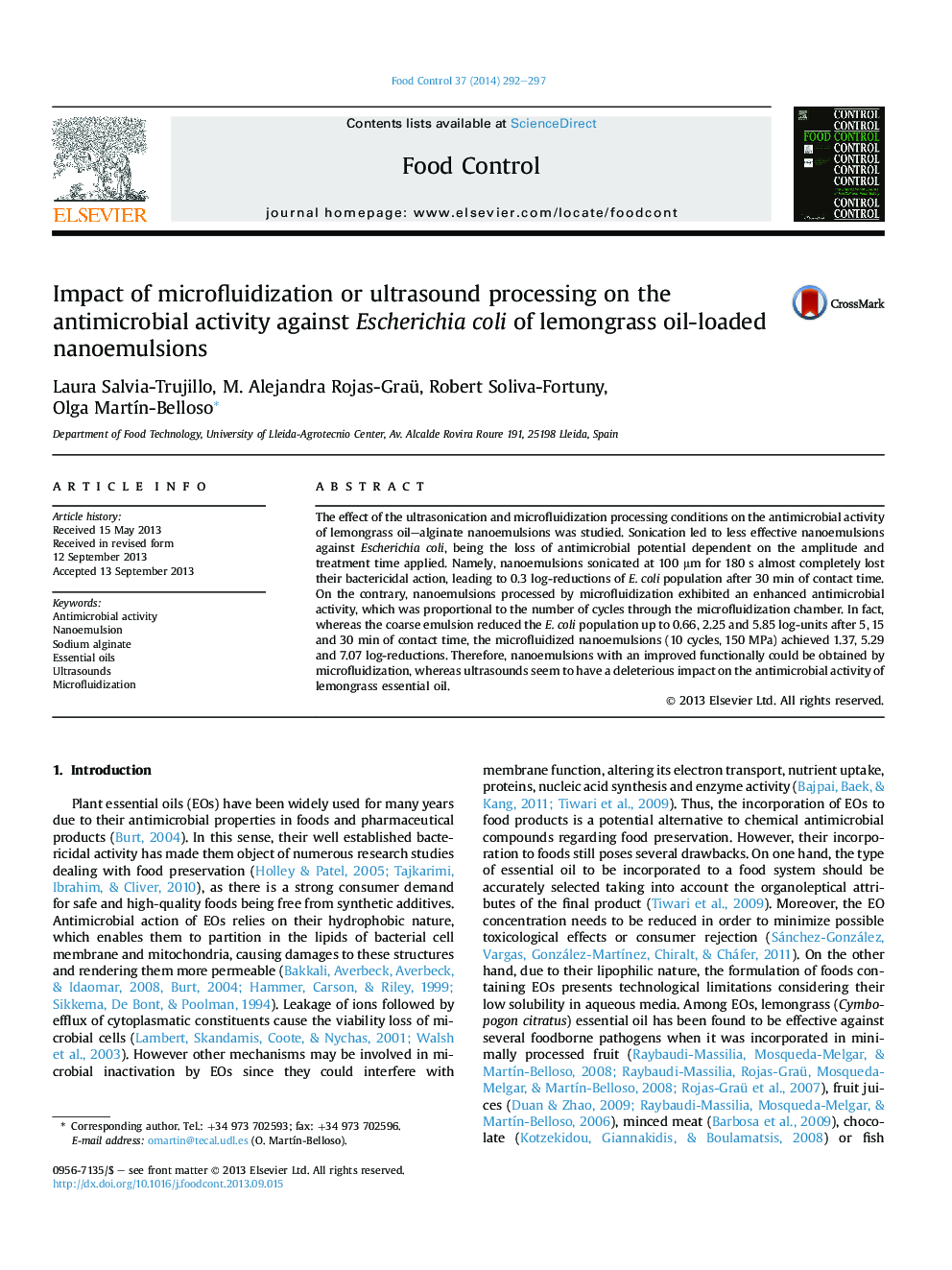| کد مقاله | کد نشریه | سال انتشار | مقاله انگلیسی | نسخه تمام متن |
|---|---|---|---|---|
| 6392243 | 1628425 | 2014 | 6 صفحه PDF | دانلود رایگان |
- E. coli inactivation by nanoemulsions with lemongrass essential oil was assessed.
- The fabrication method affected the functional properties of nanoemulsions.
- Ultrasounds severely compromised the bactericidal activity of nanoemulsions.
- Microfluidization clearly enhanced the antimicrobial activity of nanoemulsions.
The effect of the ultrasonication and microfluidization processing conditions on the antimicrobial activity of lemongrass oil-alginate nanoemulsions was studied. Sonication led to less effective nanoemulsions against Escherichia coli, being the loss of antimicrobial potential dependent on the amplitude and treatment time applied. Namely, nanoemulsions sonicated at 100 μm for 180 s almost completely lost their bactericidal action, leading to 0.3 log-reductions of E. coli population after 30 min of contact time. On the contrary, nanoemulsions processed by microfluidization exhibited an enhanced antimicrobial activity, which was proportional to the number of cycles through the microfluidization chamber. In fact, whereas the coarse emulsion reduced the E. coli population up to 0.66, 2.25 and 5.85 log-units after 5, 15 and 30 min of contact time, the microfluidized nanoemulsions (10 cycles, 150 MPa) achieved 1.37, 5.29 and 7.07 log-reductions. Therefore, nanoemulsions with an improved functionally could be obtained by microfluidization, whereas ultrasounds seem to have a deleterious impact on the antimicrobial activity of lemongrass essential oil.
Journal: Food Control - Volume 37, March 2014, Pages 292-297
